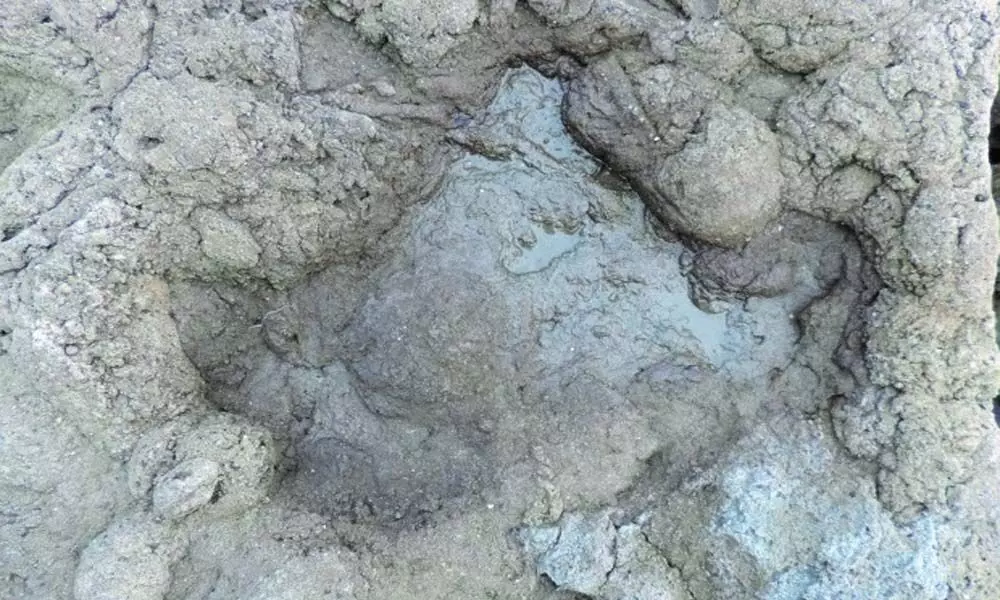Footprints of last dinosaurs walked 110M years ago in UK found
Footprints of last dinosaurs walked 110M years ago in UK found

London : A team of researchers in the UK has discovered footprints from at least six different species of dinosaur -- the very last dinosaurs to walk on the UK soil 110 million years ago.
The discovery of dinosaur footprints by a curator from Hastings Museum and Art Gallery and a scientist from the University of Portsmouth is the last record of dinosaurs in Britain.
The footprints were discovered in the cliffs and on the foreshore in Folkestone, Kent, where stormy conditions affect the cliff and coastal waters, and are constantly revealing new fossils.
"This is the first time dinosaur footprints have been found in strata known as the 'Folkestone Formation' and it's quite an extraordinary discovery because these dinosaurs would have been the last to roam in this country before becoming extinct," said Professor of Palaeobiology, David Martill.
"They were walking around close to where the White Cliffs of Dover are now - next time you're on a ferry and you see those magnificent cliffs just imagine that!"
The footprints are from a variety of dinosaurs, which shows there was a relatively high diversity of dinosaurs in southern England at the end of the Early Cretaceous period, 110 million years ago.
The footprint fossils formed by sediment filling the impression left behind when a dinosaur's foot pushes into the ground, which then preserves it, according to a paper published in the journal Proceedings of the Geologists' Association.
They are thought to be from ankylosaurs, rugged-looking armoured dinosaurs which were like living tanks; theropods, three-toed flesh-eating dinosaurs like the Tyrannosaurus rex; and ornithopods, plant-eating 'bird-hipped' dinosaurs so-called because of their pelvic structure being a little bit similar to birds.
Most of the findings are isolated footprints, but one discovery comprises six footprints -- making a 'trackway', which is more than one consecutive print from the same animal.
The largest footprint found -- measuring 80 cm in width and 65 cm in length -- has been identified as belonging to an Iguanodon-like dinosaur.
Iguanodons were also plant-eaters, grew up to 10 metres long and walked on both two legs or on all fours.
"To find such an array of species in one place is fascinating. These dinosaurs probably took advantage of the tidal exposures on coastal foreshores, perhaps foraging for food or taking advantage of clear migration routes," explained Martill.


